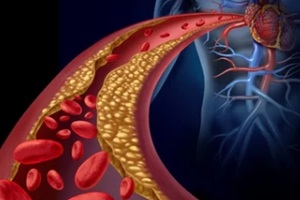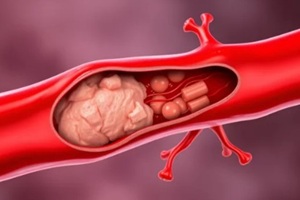 Mixed hyperlipidemia means you have high levels of both cholesterol and triglycerides in your blood. Being aware of how this condition differs from simple high cholesterol can help you better manage your heart health and work with your doctor on the right treatment plan.
Mixed hyperlipidemia means you have high levels of both cholesterol and triglycerides in your blood. Being aware of how this condition differs from simple high cholesterol can help you better manage your heart health and work with your doctor on the right treatment plan.
Comprehending Mixed Hyperlipidemia
Mixed hyperlipidemia occurs when your blood contains too much of multiple types of fats, including both cholesterol and triglycerides. This condition affects about 1 in 100 people and is more complicated than high cholesterol alone.
Your body actually needs some fats to work properly. Cholesterol helps your body form cell walls and hormones. Triglycerides store energy for later use. However, when levels of both become too high at the same time, your risk for heart disease increases significantly.
The condition often runs in families, which suggests genetics play a role. Researchers haven’t yet identified the gene that is specifically responsible for this condition, but they believe that mixed hyperlipidemia develops from a combination of inherited factors and environmental triggers. These triggers include diet, exercise habits, and other lifestyle choices.
How Regular High Cholesterol Works
High cholesterol usually refers to elevated levels of LDL cholesterol, commonly called “bad” cholesterol. LDL cholesterol can build up inside your artery walls, forming sticky deposits that narrow blood vessels and limit blood flow to your heart and brain.
When you get a cholesterol test, your total cholesterol reading includes LDL cholesterol, HDL or “good” cholesterol, and a portion of your triglycerides. Many people with high cholesterol typically have high LDL levels, while their triglycerides remain normal.
Furthermore, regular high cholesterol often responds well to diet changes, exercise, and statin medications. Treatment strategies focus on lowering LDL cholesterol to reduce those sticky deposits in arteries.
Essential Differences Between Mixed Hyperlipidemia and High Cholesterol

The main difference lies in which fats are elevated. In contrast to the raised levels of LDL in typical cases of high cholesterol, mixed hyperlipidemia involves high levels of multiple fat types, including cholesterol and triglycerides together.
Treatment approaches also differ significantly between these conditions. High cholesterol treatment typically focuses on reducing LDL levels through the use of statins and lifestyle modifications. Meanwhile, mixed hyperlipidemia requires a broader approach that addresses both cholesterol and triglyceride management simultaneously.
Additionally, risk factors vary between the two conditions. High cholesterol often develops from food choices, lack of exercise, genetics, or certain medications. Mixed hyperlipidemia is commonly linked to metabolic syndrome, diabetes, obesity, and excessive alcohol consumption alongside genetic tendencies.
Mixed hyperlipidemia may introduce a distinct sense of urgency. Triglyceride levels above 500 mg/dL significantly increase the risk of acute pancreatitis, a potentially life-threatening condition. Regular high cholesterol, while serious, typically poses long-term rather than immediate health threats.
Diagnostic Differences
Both conditions require blood testing for diagnosis, but doctors look for different patterns in your test results. A High cholesterol diagnosis focuses on LDL levels above 130 mg/dL for most people, or above 100 mg/dL for those with existing heart disease risk factors.
On the other hand, mixed hyperlipidemia diagnosis requires high levels across multiple categories. Your doctor will look for LDL cholesterol above ideal ranges, combined with triglycerides above 150 mg/dL. Total cholesterol levels typically exceed 240 mg/dL in mixed hyperlipidemia cases.
Some people with mixed hyperlipidemia develop visible signs that doctors can spot during physical exams. These include yellowish bumps near the eyes, small reddish-yellow bumps on the skin, or whitish rings around the colored part of the eye. Regular high cholesterol rarely produces such obvious physical symptoms.
Blood samples from people with mixed hyperlipidemia sometimes develop a milky white layer when left sitting. This visual clue helps doctors identify the condition.
Treatment Strategy Differences
 Managing mixed hyperlipidemia requires addressing both high cholesterol and triglycerides at the same time. Your doctor may prescribe fibrates or prescription fish oil supplements that specifically target triglycerides, while also using statins or other medications to control cholesterol.
Managing mixed hyperlipidemia requires addressing both high cholesterol and triglycerides at the same time. Your doctor may prescribe fibrates or prescription fish oil supplements that specifically target triglycerides, while also using statins or other medications to control cholesterol.
Diet recommendations also differ between conditions. High cholesterol management focuses on reducing saturated fats and dietary cholesterol. Treatment for mixed hyperlipidemia often requires limiting both fats and simple sugars, since excess carbohydrates can raise triglyceride levels.
Reducing alcohol consumption becomes more important with mixed hyperlipidemia. Even moderate drinking can raise triglycerides, so your doctor might recommend stricter limits or complete avoidance of alcohol.
Weight management takes on greater importance with mixed hyperlipidemia. Extra weight contributes to both high triglycerides and cholesterol, making weight loss a more urgent priority than it would be with high cholesterol alone.
Exercise recommendations may also intensify with mixed hyperlipidemia. While regular physical activity helps alleviate both conditions, people with mixed hyperlipidemia often require more vigorous or frequent exercise to reduce fat levels in their blood.
Long-term Health Implications
Mixed hyperlipidemia generally poses higher heart disease risks than high cholesterol alone. Having high levels of multiple fat types speeds up artery damage and increases heart attack and stroke risks more than single fat elevations.
People with mixed hyperlipidemia may also experience additional complications beyond heart disease. As mentioned above, high triglycerides can cause pancreatitis, which is also connected to fatty liver disease. This dynamic can progress to more serious liver problems.
Diabetes risk increases with mixed hyperlipidemia, particularly when the condition occurs alongside metabolic syndrome. Managing blood sugar becomes another important part of overall care.
Pregnancy considerations differ for women with mixed hyperlipidemia. Some medications used to treat the condition aren’t safe during pregnancy, requiring careful planning and medication adjustments for women planning to get pregnant.
Trust Imperial Center Family Medicine for Expert Cholesterol Management
 Mixed hyperlipidemia requires more complex management than simple high cholesterol, but with proper treatment, you can significantly reduce your risk of heart disease and other serious health concerns. Understanding these differences enables you to work more effectively with your healthcare team to develop the most suitable treatment approach for your distinct fat pattern and individual health needs.
Mixed hyperlipidemia requires more complex management than simple high cholesterol, but with proper treatment, you can significantly reduce your risk of heart disease and other serious health concerns. Understanding these differences enables you to work more effectively with your healthcare team to develop the most suitable treatment approach for your distinct fat pattern and individual health needs.
Don’t let high cholesterol or triglycerides go unchecked. Contact us at Imperial Center Family Medicine at 919-873-4437 or online to schedule comprehensive cholesterol testing and develop a personalized treatment plan that protects your cardiovascular health.
